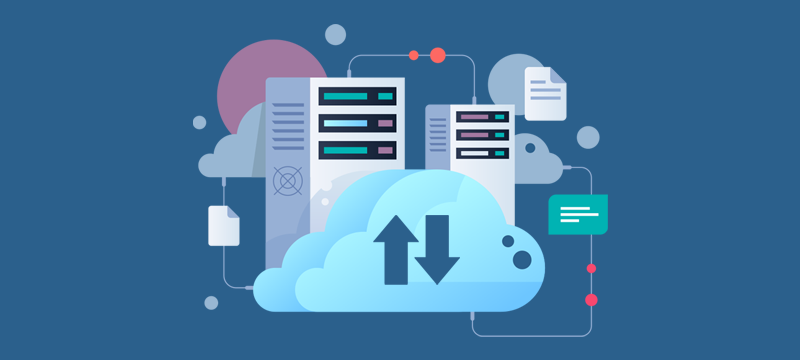Such is the reliance that enterprises have on IT that the loss of websites, applications and data due to hacking, malware, hardware failure or human error can bring their organisations to a standstill. A fundamental requirement for ensuring recovery and business continuity is having a backup solution in place. Enterprises, however, need enterprise-class solutions and here, we discuss what the essential features of such a solution should be.
1. Cloud capacity
One of the first considerations when seeking a backup solution is deciding exactly what needs backing up. For enterprises, this will, in most cases, mean backing up entire servers, together with all the software, files and data stored on them. Considering how much data modern enterprises collect and how long they hold onto it, not only is backup storage space likely to be significant; it is almost certainly going to grow over time.
As a result, enterprise-class backup solutions need to have built-in scalability to ensure that there is always sufficient storage space for the multiple large scale backups they will make. The environment which delivers enormous capacity and scalability better than any other is the cloud.
With many enterprise workloads already taking place in the cloud, it makes even greater sense, as cloud to cloud backups and cloud to cloud restoration can take place much quicker, speeding up recovery if ever needed. Additionally, the cloud also offers the financial benefit of being paid for on a pay-as-you-go basis.
2. Backup encryption
While some organisations keep their backups secure by storing them on disks and locking them in saferooms, it’s a methodology that slows down recovery and leaves the backups vulnerable to damage. The contemporary solution is to keep the backups online, where they can be stored at remote geographical locations, and to protect them through encryption. At Hyperslice, this is done using AES, military-grade encryption which is used by default during transit and optionally while at rest. As a result, personal and other sensitive data backed up by enterprises is unattainable by cybercriminals even if they gain access to the backups.
3. Constant availability
Storing backups in the cloud also ensures that, if the worst happens, organisations can access them for recovery 24/7. With the high availability of the cloud and its accessibility from anywhere with an internet connection, companies are able to start recovery quickly, helping them achieve recovery time objectives and minimise the impact of downtime.
High availability also gives enterprises the reassurance that scheduled backups will take place without disruption.
4. Continuous backups
Business continuity relies on being able to restore systems as they were at the point of disaster. While daily backups might be sufficient for some businesses, enterprises see their data being updated continuously and as a result, need ongoing backups to ensure new data isn’t lost. Failure to do this can see recent orders and emails, changes to customer information, software updates and more being permanently lost.
Ideally, therefore, enterprises need a solution that enables backups to be taken at the frequency the organisation needs and for these to be scheduled and automated.
5. Reliable backups
Sometimes a backup can go awry, leaving the data it contains corrupted and unusable. If this happens to be the backup needed for recovery, the consequences could be disastrous. Today, it is possible to check the integrity of a backup to ensure that if it is needed, it will work without a problem. At Hyperslice, not only do we check integrity; we also inform you immediately if a corrupted backup has been created so that issues can be resolved and a new backup made straight away.
6. Backing up the backups
With websites, applications and data being of such high value to modern enterprises, making just a single backup can still pose a risk. What happens if the backup is lost as well as the original system? While the vast majority of organisations don’t make copies of their backups, cloud vendors do. What’s more, they store them at data centres in different geographical locations to both the system that is backed up and the original backup. This ensures that even if a major incident like a fire, flood or earthquake takes a data centre offline, a copy of the backup will still be available at another data centre.
7. Round the clock support
While recovery in the cloud can be far quicker, it can still be a major challenge for enterprises, especially if they have large, complex systems spread over various environments and with multiple vendors. Even with experienced IT staff in house, such a process often requires the guidance and assistance of the vendor’s technical team. A vendor that provides 24/7 technical support is, therefore, essential if recovery objectives are to be met.
Conclusion
An effective backup solution can be the difference between business continuity and business failure. Effective, however, means different things to different companies. For today’s IT reliant enterprises, cloud-based backup solutions offer the range of features organisations need to ensure they can recover all their systems and data quickly following a disaster.
For more information, visit Hyperslice.com.

